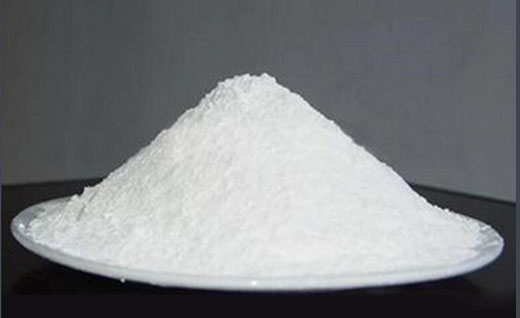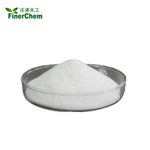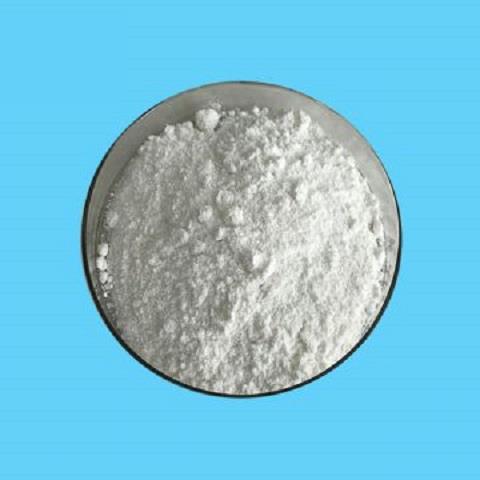The different applications of Hydroxyethyl cellulose
Apr 15,2022
Introduction
Hydroxyethyl cellulose (HEC), chemical formula (C2H6O2)n, is a white or light yellow, odorless, non-toxic fibrous or powdery solid composed of alkaline cellulose and ethylene oxide (or chlorohydrin)[1].It is prepared by etherification and belongs to non-ionic soluble cellulose ethers. Because HEC has good properties such as thickening, suspending, dispersing, emulsifying, bonding, film-forming, protecting moisture and providing protective colloids, it has been widely used in oil exploration, coatings, construction, medicine and food, textiles, papermaking and polymers. Polymerization and other fields. 40 mesh sieving rate ≥ 99%.

Picture 1 Hydroxyethyl cellulose powders
In the range of PH value of 2-12, the viscosity change is small, but the viscosity decreases beyond this range. It has the properties of thickening, suspending, bonding, emulsifying, dispersing, retaining moisture and protecting colloid. Solutions of different viscosity ranges can be prepared. It is unstable under normal temperature and pressure, avoiding humidity, heat and high temperature, and has exceptionally good salt solubility for dielectrics, and its aqueous solution is allowed to contain high concentrations of salts and remains stable.
Preparation
Alkali cellulose is a natural macromolecule. Each fiber-based ring contains three hydroxyl groups. The most active hydroxyl groups react to form hydroxyethyl cellulose. Soak raw cotton linters or refined pulp in 30% liquid caustic soda, take out and press after half an hour. Squeeze until the ratio of alkaline water reaches 1:2.8, and then pulverize. The crushed alkali cellulose is put into the reaction kettle, sealed, vacuumed, filled with nitrogen, and the air in the kettle is completely replaced by repeated vacuuming and nitrogen filling. Press into the pre-cooled ethylene oxide liquid, pass cooling water into the jacket of the reactor, and control the reaction at about 25°C for 2 hours to obtain crude hydroxyethyl cellulose. The crude product was washed with alcohol, neutralized with acetic acid to pH 4-6, and then cross-linked with glyoxal for aging. Then it is washed with water, centrifuged, dried, and ground to obtain hydroxyethyl cellulose. Raw material consumption (kg/t): cotton linters or low pulp: 730-780, liquid caustic soda (30%): 2400, ethylene oxide: 900, alcohol (95%): 4500, acetic acid: 240, ethylene glycol Aldehyde (40%): 100-300.
The gas phase method is to add additives or diluents during the reaction, and the alkali fibers and EO react in the gas phase. The cotton fibers were soaked and activated in 18.5% NaOH solution, then pressed and crushed and placed in the reactor. The reactor was evacuated, filled with nitrogen twice, EO was added, and the reaction was obtained at a vacuum degree of 90.64kPa and 27-32°C for 3-3.5 hours.
The liquid phase method is to carry out the etherification reaction in the presence of a diluent. After alkalization and pressing, the cotton linters are reacted with EO at 20-60° C. for 1-3 hours in the presence of a diluent to obtain crude hydroxyethyl cellulose. Common diluents are acetone, isopropanol, tert-butanol or their mixtures. The product remains insoluble in the diluent.
The two production processes of gas phase method and liquid phase method need to prepare alkali cellulose in advance, that is, cellulose is immersed in 18% NaOH solution at about 20 ℃ for degreasing, and after etherification reaction, it is neutralized, washed, dried and pulverized to obtain Final product.
Application fields
Hydroxyethyl cellulose is used as adhesive, surfactant, colloid protective agent, dispersant, emulsifier and dispersion stabilizer. It has a wide range of applications in coatings, inks, fibers, dyeing, papermaking, cosmetics, pesticides, mineral processing, oil extraction and medicine.
Hydroxyethyl cellulose is generally used as a thickening agent, protective agent, binder, stabilizer and additive in the preparation of emulsions, jellies, ointments, lotions, eye cleansers, suppositories and tablets, and is also used as a hydrophilic gel. It can also be used as a stabilizer in food and other functions.
Hydroxyethyl cellulose is used as sizing agent in the textile industry, bonding, thickening, emulsification, stabilization and other auxiliary agents in the electronics and light industry sectors.
Hydroxyethyl cellulose is used as a thickener and fluid loss reducer in water-based drilling fluids and completion fluids, and has an obvious thickening effect in saltwater drilling fluids. It can also be used as a fluid loss control agent for oil well cement. It can be cross-linked with polyvalent metal ions to form gels.
Hydroxyethyl cellulose is used for fracturing oil water-based gel fracturing fluids, dispersants for polymers such as polystyrene and polyvinyl chloride. It can also be used as emulsion thickener in paint industry, humidity sensitive resistor in electronic industry, cement coagulation inhibitor and moisture retaining agent in construction industry. Glazing and toothpaste adhesives for the ceramic industry. It is also widely used in printing and dyeing, textile, papermaking, medicine, hygiene, food, cigarettes, pesticides and fire extinguishing agents.
Hydroxyethyl cellulose is used as surfactant, colloid protective agent, emulsion stabilizer for vinyl chloride, vinyl acetate and other emulsions, as well as latex tackifier, dispersant, dispersion stabilizer, etc. Widely used in coatings, fibers, dyeing, papermaking, cosmetics, medicine, pesticides, etc. It also has many uses in oil extraction and machinery industry.
Hydroxyethyl cellulose has surface activity, thickening, suspending, binding, emulsifying, film-forming, dispersing, water retention and providing protection in pharmaceutical solid and liquid formulations.
Hydroxyethyl cellulose is used as a dispersant for the exploitation of petroleum water-based gel fracturing fluids, polyvinyl chloride and polystyrene. It can also be used as emulsion thickener in paint industry, cement coagulation inhibitor and moisture retention agent in construction industry, glazing agent and toothpaste adhesive in ceramic industry. It is also widely used in printing and dyeing, textile, papermaking, medicine, hygiene, food, cigarettes and pesticides and other industrial fields.
Product performance
Hydroxyethyl cellulose is soluble in hot or cold water, and does not precipitate at high temperature or boiling, so it has a wide range of solubility and viscosity characteristics, as well as non-thermal gelling properties. Hydroxyethyl cellulose is a non-ionic polymer material , can coexist with a wide range of other water-soluble polymers, surfactants, and salts, and is an excellent colloidal thickener for high-concentration dielectric solutions. The water retention capacity of hydroxyethyl cellulose is twice that of methyl cellulose, and it has better flow regulation; the dispersing ability of hydroxyethyl cellulose is comparable to that of methyl cellulose and hydroxypropyl methyl cellulose The specific dispersing ability is the worst, but the protective colloid ability is the strongest.
Reference
1 Zhang Liming, Tan Yebang, Li Zhuomei. Graft polymerization of betaine-type olefin monomers and hydroxyethyl cellulose. "Polymer Materials Science and Engineering", 2000
- Related articles
- Related Qustion
- Hydroxyethyl Cellulose: Enhancing Dental Care and Food Packaging Innovations Oct 25, 2024
Hydroxyethyl cellulose is an organic chemical compound derived from cellulose. It is a non-ionic water-soluble, biocompatible and biodegradable polymer.
- Benefits Of Hydroxyethyl Cellulose Jan 5, 2022
Hydroxyethyl cellulose (HEC) is a nonionic, water-soluble polymer. It is a white, free-flowing granular powder and is made by reacting ethylene oxide with alkali-cellulose. HEC has uses in the cosmetics and personal care industries as a gel
- Properties and Uses of Hydroxyethyl cellulose Jan 5, 2022
HydroxyEthyl Cellulose and sodium ascorbate disperse in the organic solvent, and by spray drying, the encapsulated sodium ascorbate in particles can be directly compressed into tablets.
5-Hydroxymethylfurfural is an organic substance with a molecular formula of C6H6O3 and a molecular weight of 126.11.....
Apr 15,2022APIQuinine is a medication used to treat malaria and babesiosis.This includes the treatment of malaria due to Plasmodium falciparum that is resistant to chloroquine when artesunate is not available.....
Apr 15,2022APIHydroxyethyl Cellulose
9004-62-0You may like
Hydroxyethyl Cellulose manufacturers
- Hydroxyethyl Cellulose
-

- $0.00 / 25Kg/Bag
- 2025-12-16
- CAS:9004-62-0
- Min. Order: 1KG
- Purity: 99%
- Supply Ability: 1000mt
- Hydroxyethyl cellulose
-

- $42.00 / 1g
- 2025-12-16
- CAS:9004-62-0
- Min. Order:
- Purity:
- Supply Ability: 10g
- Hydroxyethyl Cellulose
-

- 2025-12-15
- CAS:9004-62-0
- Min. Order:
- Purity: 0.99
- Supply Ability:






